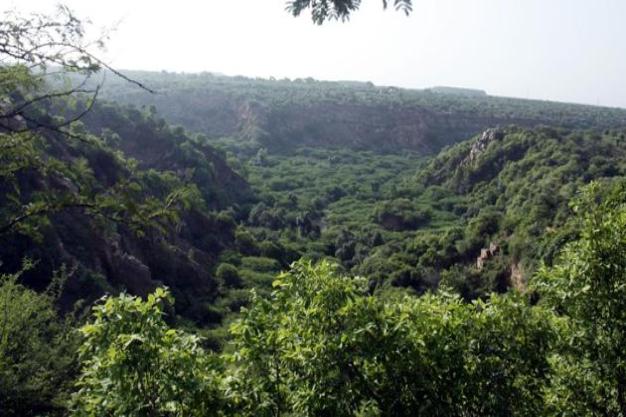
Haryana has the lowest forest cover in the country at 3.63%, far below the national average of 21.67%. With a land area of 44,212 sq km, only 1,603 sq km is forested, despite a 2006 Forest Policy aiming for 20% coverage. Gurgaon, experiencing rapid urban expansion, has seen its forest cover decline, especially in the Aravalli and Shivalik hills. From 2019 to 2021, Gurgaon lost 2.47 sq km of forest, with the majority being moderately dense and open forests (68.4%). Illegal activities like encroachments and mining have ravaged the Aravalli hills, posing environmental challenges and threatening biodiversity. These hills serve as crucial regulators of climate and water resources, preserving the ecological and cultural heritage of Haryana and India.
The Aravalli hills are a significant source of biodiversity, sheltering numerous rare and endangered species of flora and fauna. Beyond their ecological significance, these hills serve as vital regulators of the region’s climate and water resources. Within these forested enclaves, over 20 wildlife species, 200 bird species, and a staggering 400 native tree varieties have been documented. Among the inhabitants are leopards, hyenas, jackals, wolves, foxes, deer, jungle cats, civets, porcupines, hares, wild pigs, rhesus macaques, nilgai, grey francolins, and chinkaras. Notably, these hills serve as an indispensable shield, warding off the encroaching desertification spurred by winds from western Rajasthan, thereby preserving the Gurgaon region. Beyond their ecological importance, the Aravalli hills embody a cherished ecological and cultural heritage for the people of Haryana and India at large.
Despite the lockdown in 2020, illicit activities, particularly sand and stone mining, persisted in the Haryana Aravallis, leaving visible scars in the belts of Pandala, Damdama, Jalalpur-Sohna, Mangar, Tauru, and Nuh on the city’s outskirts. The city itself has witnessed a substantial depletion of green belts and trees, a consequence of ongoing road construction, widening projects, and encroachments. The resulting loss of forest and greenery poses a formidable environmental challenge, particularly amidst a rapid deterioration in air quality and escalating water and soil pollution within the region.
Urgent imperatives now include the preservation of existing forest areas and a proactive push to expand green coverage through vigorous afforestation initiatives. While the Gurugram Metropolitan Development Authority (GMDA) has taken positive steps, such as creating a 10-acre “urban forest” in Sector 109, challenges persist. Afforestation efforts led by various entities like the forest department, city administration, and Resident Welfare Associations (RWAs) remain inconsistent. Urgent proactive measures are needed to safeguard the Aravallis. These include designating the Aravalli as a Natural Conservation Zone and protecting common lands.
Forest, a concurrent subject in the Indian constitution, is managed by both central and state laws. Legal frameworks exist, but enforcement is key. Recently, the Forest Conservation Rules 2022 emphasized regional and state committees’ constitutions for effective conservation. Haryana’s specific laws, such as the Forest (Conservation and Regulation) Act of 1995, prevent mining without state approval, while the Forest (Prevention of Encroachment) Rules of 2012 combat illegal encroachments. The century-old Punjab Land Preservation Act, aimed at conserving subsoil water, encounters challenges. Proposed amendments in 2019 raised concerns about potentially opening Aravalli and Shivalik hills to mining and real estate development. However, Supreme Court interventions,have restrained mining and construction activities on these lands.
Citizen activism plays a pivotal role in the fight for Aravalli conservation. Initiatives like the Aravalli Bachao Andolan and the Save Aravalli Trust raise awareness, mobilize support, and petition the government for strengthened legal frameworks. Teams conduct on-ground assessments, report illegal encroachments, and organize eco-walks to foster public engagement. Preserving Gurgaon’s vanishing green cover requires collective efforts from all stakeholders, as the call for urgent action grows louder.
